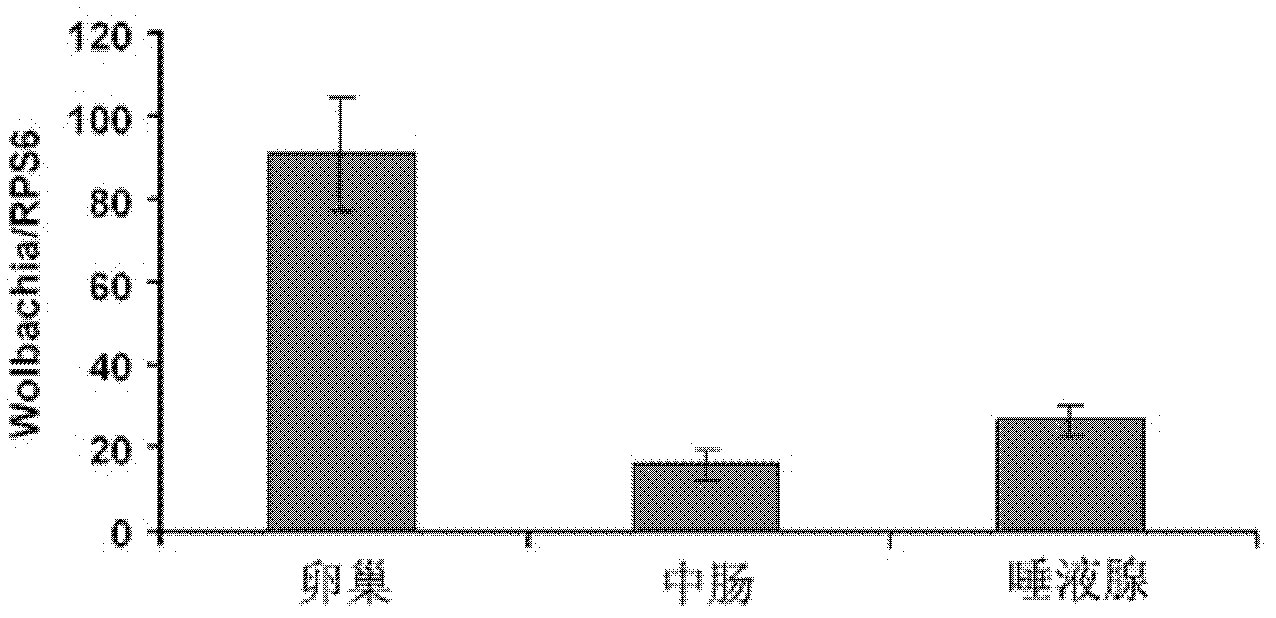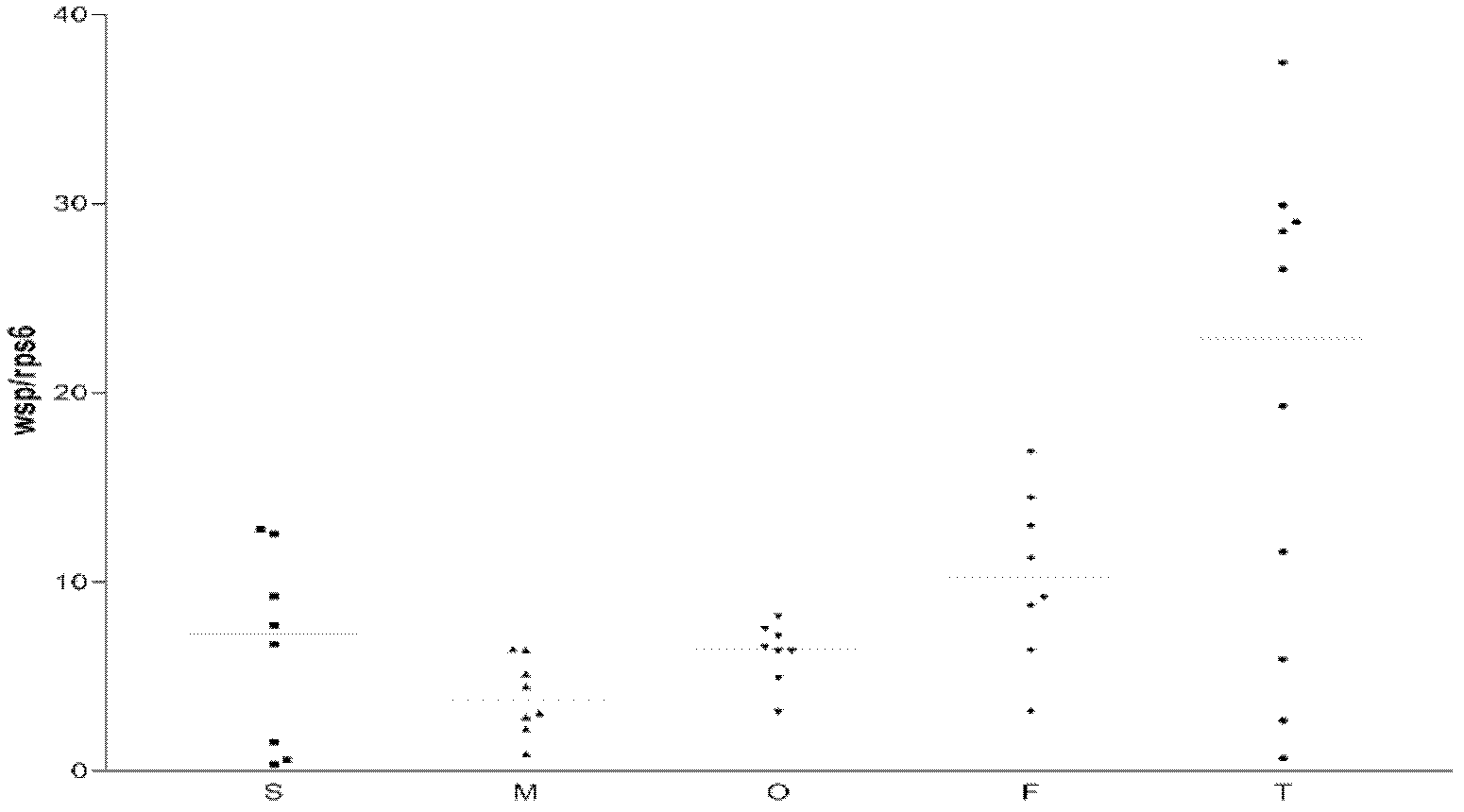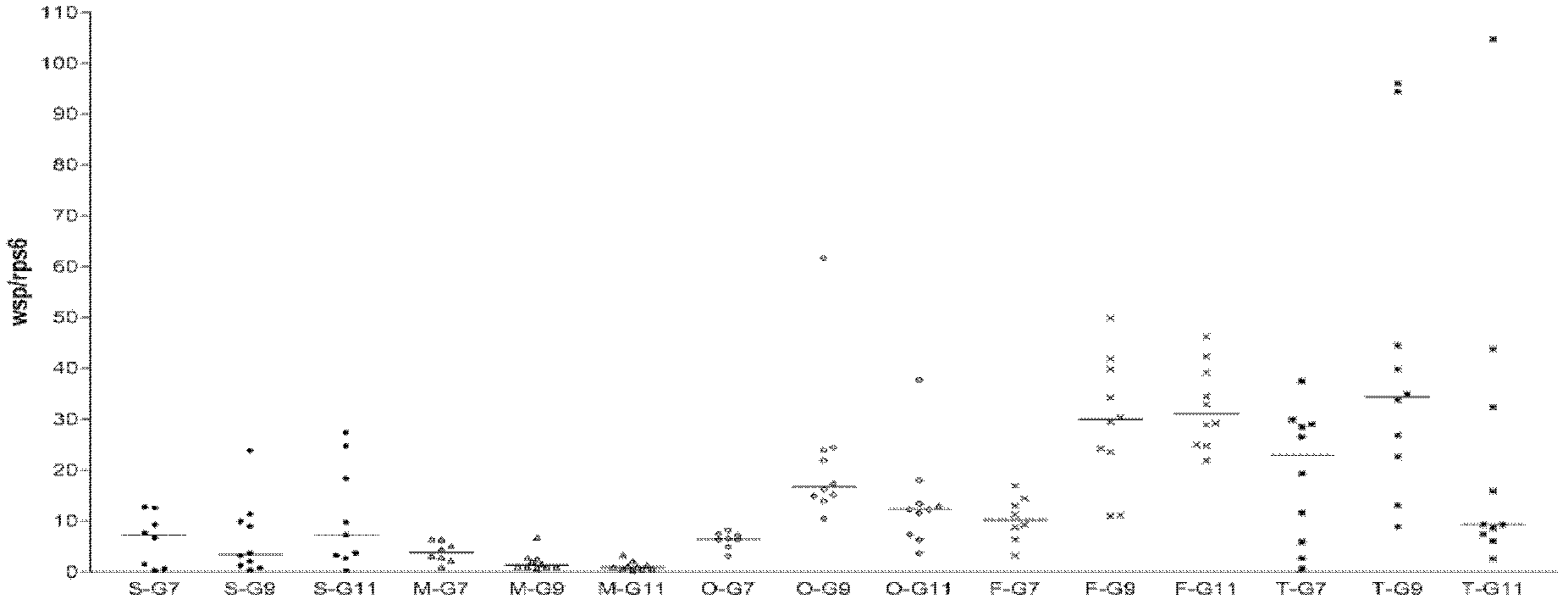Primer for quickly and quantitatively detecting Wolbachia in tissues of mosquito and reagent box and method thereof
A technology for quantitative detection and detection of primers, applied in the biological field, can solve the problems of limited detection conditions, time-consuming, low specificity, etc., and achieve the effects of saving time and cost, improving work efficiency, and easy operation
- Summary
- Abstract
- Description
- Claims
- Application Information
AI Technical Summary
Problems solved by technology
Method used
Image
Examples
Embodiment 1
[0023] Embodiment 1: Quantitative determination of Wolbachia (Wolbachia) in midgut, salivary gland, ovary tissue of Aedes aegypti artificially transfected type B Wolbachia (Wolbachia)
[0024] 1. Acquisition of mosquito tissue samples containing Wolbachia: use CO 2 Anesthetize the mosquito to be tested (Aedes aegypti mosquito artificially transfected with Wolbachia type B), dissect and separate the mosquito tissue (midgut, salivary gland, ovary) to be tested with a needle under a dissecting microscope, and use STE buffer The isolated tissue was rinsed three times and then placed in 50 μL STE buffer. The STE buffer solution belongs to the prior art buffer solution, and its formula is 100mM NaCl, 10mM Tris-Cl, pH 8.0 and 1mM EDTA, pH 8.0.
[0025] 2. Extraction of Wolbachia genome in tissue: put 50 μL STE buffer containing mosquito tissue in a homogenizer, grind for about 45 seconds, add 2 μL protein kinase K (Proteinase K) (10 mg / mL ), place the reaction solution at 55°C for 30...
Embodiment 2
[0030] Embodiment 2: To the midgut, salivary gland, ovary, fat body and testis tissue of Anopheles stephensi (Anopheles stephensi) of artificial transfection B type Wolbachia (Wolbachia) Quantitative determination
[0031] 1. Acquisition of mosquito tissue samples containing Wolbachia: use CO 2 Anesthetize the mosquito to be tested (Anopheles stephenii artificially transfected with Wolbachia type B), and dissect and separate the mosquito tissue to be tested (midgut, salivary gland, ovary, fat body and testis) with a needle under a dissecting microscope ), the isolated tissue was rinsed three times with STE buffer and placed in 50 μL of STE buffer. The STE buffer solution belongs to the prior art buffer solution, and its formula is 100mM NaCl, 10mM Tris Cl, pH 8.0 and 1mM EDTA, pH 8.0.
[0032] 2. Extraction of Wolbachia genome in tissue: put 50 μL STE buffer containing mosquito tissue in a homogenizer, grind for about 45 seconds, add 2 μL protein kinase K (Proteinase K) (10 ...
Embodiment 3
[0038] Embodiment 3: Quantitative monitoring in different generation lines Wolbachia (Wolbachia) in the Anopheles stephensi (Anopheles stephensi) tissue distribution of artificial transfection B type Wolbachia (Wolbachia)
[0039] 1. Acquisition of mosquito tissue samples containing Wolbachia: use CO 2 Anesthetize the mosquitoes to be tested (Anopheles stepheni mosquitoes artificially transfected with type B Wolbachia (Wolbachia) of different generations), dissect and separate the mosquito tissues to be tested (midgut, salivary glands, ovaries, Fat body and testis), the isolated tissue was rinsed with STE buffer three times and placed in 50 μL of STE buffer. The STE buffer solution belongs to the prior art buffer solution, and its formula is 100mM NaCl, 10mM Tris Cl, pH 8.0 and 1mM EDTA, pH 8.0.
[0040] 2. Extraction of Wolbachia genome in tissue: put 50 μL of STE buffer containing mosquito tissue in a homogenizer, grind for about 45 seconds, add 2 μL of protein kinase K (Pr...
PUM
 Login to View More
Login to View More Abstract
Description
Claims
Application Information
 Login to View More
Login to View More - R&D
- Intellectual Property
- Life Sciences
- Materials
- Tech Scout
- Unparalleled Data Quality
- Higher Quality Content
- 60% Fewer Hallucinations
Browse by: Latest US Patents, China's latest patents, Technical Efficacy Thesaurus, Application Domain, Technology Topic, Popular Technical Reports.
© 2025 PatSnap. All rights reserved.Legal|Privacy policy|Modern Slavery Act Transparency Statement|Sitemap|About US| Contact US: help@patsnap.com



